|
|
WINTER EDITION | NOVEMBER 2021

|
|
|
This issue of Community Tree Connections is all about change and some of the things your city can do to prepare for change in your urban forest.
2022 – Are YOU Ready?
Is your city’s urban forest ready for winter? Traditionally, we offer guidance on how to prepare your city’s trees for rain, wind, snow, and ice in our December CTC newsletter. Since you can now get urban forest winter preparedness and storm response information off our U&CF Assistance program website now, let’s focus on a bigger picture here.
Is your city’s urban forest ready for 2022? You may be noticing some changes in your town, not necessarily associated with climate change. Over the past decade, Oregon has grown a lot – over 10 percent statewide, according to the 2020 US Census. Deschutes County leads the way with over 25 percent growth, followed by Crook, Polk, Washington, Jefferson, Clackamas, Benton, Multnomah, Clatsop, and Linn counties – each experiencing over 10 percent growth. Several more counties have grown by at least 9 percent. In many of these counties, the percentage of occupied housing units is more than 90 percent. When urban foresters hear about rapidly increasing population and housing growth, we think about what it means for urban tree canopy -- huge increases in development pressure in urban growth boundaries, tree canopy being removed from lands around cities, changes in topography, soil, urban heat islands, warmer streams, fewer acres intercepting rainfall, etc.
Oregon’s urban and suburban populations will continue to grow. Climate change-related weather extremes, such as ice storms and “heat domes,” likely will also become more frequent in 2022 and beyond. The best defense against development pressures and weather extremes is to manage your city’s trees proactively. With the assistance, resources, and tools the U&CF Assistance Program offers, we try to help cities get ahead of some of these growth and climate pressures. We assist cities as they prepare for and respond to the changes coming to their community forests.
|
|
Now and until Jan. 31, 2022
Resilient Communities: People, Places & Trees
PNW-ISA Annual Training Conference 2021
View pre-recorded programs on your own time 24/7
Virtual navigation guide
Registration is available until 1/7/22
Dec. 15, 2021
Application deadline for Tree City USA, Tree Campus Higher Education, and Tree Line USA
Dec. 17, 2021, 8 a.m. PT
The Power of Simplicity: Communicating Guidelines in Urban Forestry
PNW-ISA
Register
Dec. 28, Jan. 25, Feb. 22
2:30 p.m. PT
Oregon TreePlotter™ Inventory (TPI) Monthly Discussion Group
ODF UCF Assistance Program
Register
Jan. 28, 2021, 8 a.m. PT
A Tale of Two Cities: How to obtain funding for your municipal tree maintenance program
PNW-ISA
Register
|
|
|
Over the last decade, Oregon’s population grew by over 10 percent. (Source: 2020 U.S. Census)
2022 – Are WE ready?
Change is also coming to ODF’s Urban and Community Forestry Assistance Program. As some of you already know, both Katie and Kristin are planning to retire in the earlier part of 2022. Would you like to know more about our jobs? Would you like to be notified when the recruitment opens for our positions? If so, send us an email with the subject line: “Oregon UCF job interest” and tell us what you want to know. ODF is planning to recruit for the U&CF manager position in January-February 2022, and the community assistance forester position in the spring/early summer. Kristin plans to stick around for a couple of months to help with the transition of the new program manager, and the new manager will take the lead in hiring the new community assistance forester. Urban forestry assistance to Oregon communities will continue as usual.
|
|
Climate change – Preparing your urban forest
Managing a natural system effectively often relies on judiciously making small changes to things you are already doing. Cities can prepare themselves for weather extremes by simply “tweaking” some of their regular practices. For example, planting young trees in good quality soil with enough rooting space so they can grow well into maturity is a good basic climate change strategy for urban trees. In his book Up By Roots, James Urban, urban tree researcher and Landscape Architect, demonstrates that many trees need 1000 cubic feet of soil available to them at maturity. Even if your city tree planting specifications typically do not require that much soil for new trees, keep that metric in mind. Look for opportunities to plant trees with more rooting space in the future.
Other strategies include:
- Minimizing moisture competition with trees by other plants. Trees do best when they do not have to compete with turfgrass, flowers, or other plants for water.
- Early structural pruning, every 2-3 years for the first 10 years after transplanting, creates trees that are more resilient in hurricanes and snow when they are mature.
- Mulching is important for regulating soil temperature and prolonging moisture in the soil. Wood chips are more effective than bark mulch. However, bark mulch is better than nothing.
- Watering trees during the dry season – watering weekly during their first 3-5 years after transplanting – using drip systems, soaker hoses, and watering early in the day. Older trees also benefit from a good soak once or twice a summer if they are not receiving landscape irrigation.
- For downtown renovations and residential development, consider installing newer technologies such as permeable pavement, modular pavements, SilvaCells™, structural soil, etc. to increase rooting space and soil quality.
- Staking trees in a manner that allows them to sway and develop strong wood to withstand gusts.
James Urban has excellent tree planting specifications on his website. All are open source, free and can be edited by the user.
For more information on the structural pruning of trees, visit Dr. Ed Gilman’s website.
|
|
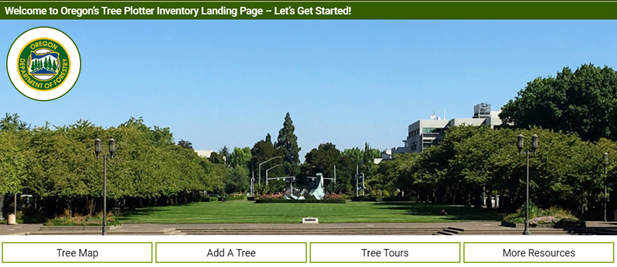 Oregon TreePIotter™ Inventory
Plan to inventory your city’s trees in 2022! The pandemic restrictions are lifting. We are all starting with a new slate. Tree inventories form the basis for community forest management plans. They can help you target areas in need of more trees. They can help you plan for invasive insects and diseases in your urban forest. They can help you make the case for more urban forestry funding for your tree care efforts! Your city can access state-of-the-art tree inventory software for free through our Oregon TreePlotter™ Inventory project!
We are looking for cities that want to create invasive pest management plans based on their TreePlotter™ Inventory! Your city does not need to have a tree inventory currently. If your city is near a port or located along Oregon’s borders, we want to hear from you! Funding may be available for data collectors to inventory many of your city’s public trees early next year. Please email us at your earliest convenience if your city is interested. Priority will be given to smaller cities located near Oregon borders or ports.
Want to learn more about TreePlotter™ Inventory? Visit the OR TreePlotter™ Inventory webpage and check out The Time to Plot is Now video featuring PlanIT Geo’s founder, Ian Hanou, and Grants Pass City Forester, Tony Mecum. Get your questions answered in the Frequently Asked Questions - OR TreePlotter™ Inventory document. Finally, please join us at one of our informal “TPI Tuesday” meetings. Every 4th Tuesday at 2:30 p.m. via Zoom. More information and to register.
|
|
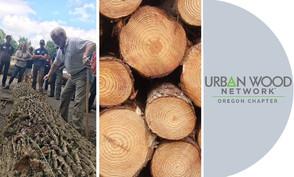 |
|
Beyond waste – Finding value in urban wood
By Margaret Miller
We all work hard to care for and maintain a healthy urban forest, but sometimes trees need to be removed. No matter the cause, whether it be from storm damage, invasive pests and diseases,
|
|
|
|
or just old age – trees come down and wood from those removals must be managed.
Historically, the wood from these trees was seen as a waste product with high disposal costs. It has often ended up chipped, “landfilled,” or even burned in backyard fire pits or woodstoves.
Today communities across the country are finding ways for removed trees to live on as new sources for green building materials, sustainable energy, and more. The Urban Wood Network (UWN) is a collection of people, organizations, and businesses all working together to find more value in urban trees once they are removed. UWN members all work on different projects and offer different services, but share a common vision for putting dead and dying trees to better use. You can learn more about the Urban Wood Network by visiting www.urbanwoodnetwork.org. Initiatives like the UWN, encourage communities across the country to manage their natural resources more sustainably, reduce wood disposal costs, and purchase locally made green products. Beyond the environmental benefits, urban wood utilization has workforce advantages. Local municipalities build stronger partnerships with wood industries to mill, dry, and create new products, jobs, and revenue.
In 2021, Oregon became one of the newest state chapters of the Urban Wood Network. Although we are in our infancy, we are excited for the future and encourage you to join in the movement.
Margaret Miller is an Air Quality Planner and Forester at the Department of Environmental Quality. Margaret serves on the Oregon chapter of the Urban Wood Network.
|
|
Increasing the resiliency of your urban forest
Adaptive Capacity is a way of understanding the strengths and weaknesses of a system. Creating a resilient urban forest takes more than choosing individual trees with high adaptive capacities. We can also apply this understanding to an entire urban forest’s vulnerability to stressors. The strengths and weaknesses – or adaptive capacity -- of an urban forest are found in its biological realm, of course, but also and just as important, in human economic, social, and organizational realms.
Adaptive factors in an urban forest might include:
Tree Canopy Diversification Factors relate to the amount of genetic and age diversity in of the trees in your city forest. Low diversity is a weakness, high diversity is a strength. Since pests and diseases are more likely to target many species within the same genus, tree diversity guidelines now encourage increasing the number of tree genera in an urban forest. Use cultivated tree varieties (“cultivars”) judiciously, avoid planting large numbers of the same tree in one place, and “experiment” with new trees in your urban landscape.
Economic Adaptive Factors might include city funding for urban tree care. Cities with fewer financial resources may be limited in their adaptive capacity to respond to climate change.
Organizational/Technical Adaptive Factors include trained staff, flexible policies, or lack thereof. A city may not have a large tree care budget, but it may have other strengths such as good policies, and an up-to-date tree inventory, or may be practicing good tree care.
Social Adaptive Factors reflect community support for planting and caring for trees. (If the city residents don’t support urban forestry efforts in a city, that can be a real weakness). By comparison, being a Tree City USA with a city-recognized tree committee is a strong adaptive factor! Community efforts can also offset ongoing urban stressors and additional climate change stress, such as working with Master Gardeners to understand local insects and diseases, holding community tree fairs or pruning demonstrations, and regular discussions with city councils and city staff about the importance of trees in cities.
|
|
We are in the final days of the 2021 Tree City USA (TCUSA) application season (the deadline in Oregon is Wednesday, Dec. 15). Did you know that cities applying for TCUSA recognition (for the second year and beyond) can also apply for a TCUSA Growth Award? Also due on 12/15, the Growth Award recognizes your city for its tree care and community engagement activities beyond the TCUSA standards. Read on to learn about just a few activities that can be submitted each year to reach the needed 10 points to apply. To view all the categories and activities, visit Tree City USA Growth Awards - The Arbor Day Foundation. Contact Katie with your questions and apply today! |
|
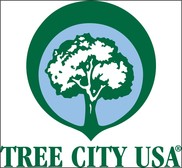 |
A3 – Grant Applications (3 points). During the year, two or more applications for grant funding were submitted (not necessarily awarded) to accomplish specific community forestry projects or programs. To apply for this activity, you will need to list the grant applications that were submitted and describe why the city applied for these.
B6 – Tree Inventory Portion (3 points). During the year, a portion of the public tree-by-tree inventory was completed or updated and entered into the management system. To apply for this activity, you will need to describe the area surveyed and give the number of trees covered and the % of public trees those trees represent. You will also need to upload a .pdf of the data report (summary).
C2 – Species List (3 points). During the year, the city established as policy (not regulation) a list of recommended or prohibited tree species for planting on public property. To apply for this activity, you will need to describe the new or updated list and inform what tree species were added or subtracted.
C7 – Annual Work Plan (3 points). To apply for this activity, you will need to summarize and upload a pdf of the city’s targets and budget for tree planting, maintenance, and removals on public property for the upcoming fiscal year.
D6 – Planting to Removals Ratio (3 points). During the year, the number of trees planted on public property was greater than the number of public trees removed. To apply for this activity, you will need to report the same number of trees planted and removed that were reported in the city’s TCUSA application.
E6 – New Tree Board Member (2 points). During the year, the city’s tree “board” added one or more new members due to expansion, retirement, or term limits. To apply for this activity, you will need to state who the new member(s) are, why they were added, and their role or qualifications.
|
|
|
Ian Nelson (L) and Nathaniel Hayden (R) – City of Talent’s sawyer team members.
|
Clearing fallen trees after the Almeda Fire – A firsthand account from the City of Talent
By Michael Hoch
On Sept. 9, 2020, the Almeda Fire quickly engulfed much of the Rogue Valley. The fire destroyed about 40% of property within the City of Talent and created many hazardous trees. The next day as I walked around town assessing
|
|
the damage, I quickly realized that driving was impossible due to the many fallen trees on the roadways. The electrical provider had crews out to fix power lines but their efforts to restore power were delayed due to the need to first buck up* trees that were in their way. I came up with a plan. The City could help clear the fallen trees, mitigate hazards around town, and help regain utility services using a sawyer* team. After reporting my findings to City leadership and petitioning for help, I reached out to trail maintenance organizations, Trailkeepers of Oregon (TKO), and the Pacific Crest Trail Association (PCTA). Specifically, I contacted highly regarded sawyers, |
|
Scott Youngblood, City of Talent’s sawyer team member.
|
|
|
Scott Youngblood (TKO member) and Ian Nelson (PCTA member) who have experience cutting in a wildfire zone and have taught crosscut* and chain saw certification courses with me in the past. They and their experienced swampers*, Venessa Heilmann (Scott) and Nathaniel Hayden (Ian) were committed to helping before I got done telling them about the City’s need for a wildfire recovery sawyer team!
With the sawyer team on-site, we ran our chainsaws for an entire workweek, clearing hazardous trees from Talent’s roadways. Every day, the crew worked until running out of daylight or until our forearms couldn’t hold our saws anymore – whichever came first!
Partnering with these local trail maintenance organizations benefited the City of Talent greatly. It freed staff to focus on other necessary projects and removed hazards quicker, expediting Talent’s rebuilding process.
I bring this story to you for two reasons. First, to inform other communities on what helped Talent begin to recover from a wildfire. Regretfully, we all know wildfire will affect Oregon communities during future fire seasons. Secondly, to inform communities, trail maintenance organizations, and decision-makers that while this informal sawyer team was greatly beneficial to my community, it could be worth investigating the feasibility of developing a more formal state-wide team.
* Definitions
- Buck up – Cutting a felled tree and its branches into shorter lengths.
- Crosscut saw – A saw with a handle at each end, used by two people for cutting across the wood grain.
- Sawyer – A person who cuts wood.
- Swamper – A person who assists a sawyer by clearing brush.
Michael Hoch, mhoch@cityoftalent.org is the Sustainability and Code Enforcement Officer for the City of Talent. The City of Talent has been a Tree City USA for 21 years.
|
|
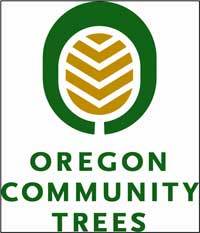
Virtual Urban and Community Forestry Conference a success!
By Teresa Gustafson
After suspending the annual Oregon Urban and Community Forestry Conference in 2020, Oregon Community Trees and the Oregon Department of Forestry, with 122 people in attendance, held the state’s conference virtually on Sept. 14-15, 2021. With the theme, Water Wise Community Forests: Strategies for our Future, the event provided research-based recommendations and Best Management Practice tips for community tree managers on how to think about, and plan for, drought, stormwater, and trees in an increasingly extreme climate. Day one of the conference focused on the implications of drought and a warming climate with presentations on the effects of drought on tree resilience, identifying and developing climate-resilient species, and young tree survival. Day two changed gears to the other face of climate change - extreme weather events - with presentations on storm preparation, storm response, and stormwater management. All talks were recorded and are available to watch on the Oregon Community Trees YouTube page. The 2021 conference was provided with the assistance of Social Enterprises, an Oregon benefit company committed to enhancing local communities by organizing events for non-profits and sustainably focused organizations.
Teresa Gustafson is the Urban Forester for the City of La Grande and serves on the OCT Board of Directors.
|
|
|
 |
|
Forestry Board appoints Cal Mukumoto as new Oregon state forester
The Oregon Board of Forestry voted unanimously to appoint Cal Mukumoto as Oregon’s 14th state forester during a special meeting on Friday, Oct. 29. Mukumoto will now work with the Department of Forestry’s Human Resources team on terms of his employment prior to determining a start date.
Read more
|
 |
|
Oregon Community Trees honors Salem resident with its President’s Award for urban forestry achievements
Salem resident Kristin Ramstad has been honored by Oregon Community Trees (OCT) for her many contributions to urban forestry in Oregon. Samantha Wolf is OCT president. She bestowed the OCT President’s...
Read more
|
Oregon Board of Forestry approves climate change and carbon plan to help guide ODF
The Oregon Board of Forestry has approved a new Climate Change and Carbon Plan that it says will be the vision and roadmap guiding the agency toward climate-smart forestry. The plan was approved unanimously at the Board’s Nov. 3 virtual meeting. “Our forests are already experiencing impacts...
Read more
Forestry Department issues call for proposals to support small forestland owners and Firewise USA communities
The Oregon Department of Forestry issued a call for projects today for $5 million in grants funded by Senate Bill 762. The Small Forestland Grant Program, authorized by Section 24 of Senate Bill 762, will award $5 million to projects supporting small forestland owners across Oregon. Approximately $4.25...
Read more
Forestry Department to open request for proposals under grant program authorized by SB762
The Oregon Department of Forestry will issue a request for proposals today for $20 million in grants funded by Senate Bill 762. The Landscape Resiliency Program, authorized by Section 18 of Senate Bill 762, will award $20 million for landscape-scale projects meant to reduce wildfire risk through the restoration...
Read more
Oregon Dept. of Forestry wants your help reporting heat and drought damage to trees
The Oregon Department of Forestry wants Oregonians’ help to better understand the impact of this summer’s extreme heat and drought on the state’s forests. The agency is asking Oregonians to record any damage to trees from the heat and drought using a simple online survey. The survey was made by...
Read more
Hiroshima peace tree plantings
Happy Valley is the latest Oregon Tree City USA to finish planting its Hiroshima peace tree...
Read more
The latest peace tree grown from seeds of trees that survived the 1945 atom bombing of Hiroshima is headed to its new home in Gresham near that city's Japanese garden...
Read more
Coos Bay is the latest Oregon community to plant a peace tree grown from seeds of trees that survived the atomic bombing of Hiroshima, Japan in 1945...
Read more
Can a tree be too popular?
Dogwoods might be. Showy spring flowers, red fall color and compact size have led to huge numbers being planted nationwide...
Read more
Time to remove your tree watering bag
Don't forget to remove your tree watering bag now that fall is here. The plastic prevents rain from soaking young tree roots, which are limited to near the trunk...
Read more
|
|
New Urban and Community Forest Sustainability Standard drafted
Sustainable Forestry Initiative (SFI) is developing a new Urban and Community Forest Sustainability Standard in partnership with urban forestry leaders. The first draft recently went through one of two scheduled public comment periods (the second and final public comment period will be in Spring 2022). The new standard is built on 5 principles and has 16 objectives with several performance measures and indicators. Read the draft of the standard. Learn more.
|
|
 |
 |
|
More parks and waterways in cities could prevent premature deaths, study finds
Green space is crucial to the well-being of city residents. Read this article in The Conversation that compiles research on the importance of green-and blue-space in urban environments.
|
|
|
The 2021 Emergency Coastal Resilience Fund
The National Fish and Wildlife Foundation (NFWF), in coordination with the National Oceanic and Atmospheric Administration (NOAA), announces the 2021 Emergency Coastal Resilience Fund (ECRF) to support projects that increase the resilience of coastal communities impacted by hurricanes and wildfires in 2020 and 2021. Applicant Webinar, Tuesday, Dec. 7, 2021. Full proposal due date, Thursday, Feb. 3, 2022. Emergency Coastal Resilience Fund | NFWF.
Urban forest systems and green stormwater infrastructure
This document from the USDA Forest Service focuses on the effects of trees on urban stormwater runoff, provides urban forest management strategies to maximize stormwater benefits, and reports on examples around the United States where the stormwater benefits of urban trees are credited for reducing stormwater volume and pollutant loading. This document serves as a resource manual for natural resource professionals to help them communicate with stormwater managers and engineering professionals about the science and benefits of urban trees in stormwater management. Resources on accounting for the stormwater functions of trees are provided as a starting point for state and local governments interested in providing regulatory credit for urban forests in green stormwater infrastructure. Urban forest systems and green stormwater infrastructure (vibrantcitieslab.com).
Building community resilience with nature-based solutions – A guide for local communities
The Federal Emergency Management Agency (FEMA) published this guide in June 2021 to help communities implement nature-based solutions to build resilience to natural hazards. As a result of climate change, natural disasters are becoming more frequent and more costly. Nature-based solutions are a cost-effective approach to keep natural hazards from becoming costly disasters. Building Community Resilience with Nature-Based Solutions: A Guide for Local Officials (fema.gov).
ISA Conference Rewind series
Free podcasts and video presentations are available to all. Continuing education credits for a fee. 6–50 minutes in length. Providing the tree care industry’s top researchers, educators, and practitioners and the most popular presentations from the ISA 2020 virtual conference. Introducing Conference Rewind (isa-arbor.com).
Urban Forest Connections webinar series
Monthly, Second Wednesdays, 1:00-2:15 p.m. (ET) USDA Forest Service
Free, monthly, 1+ hour webinars offering continuing education credits. Discussions on the latest science, practice, and policy on urban forestry and the environment. Past webinars are recorded and available on their website.
TREE Fund webinar series
TREE Fund and the Alabama Cooperative Extension System
Free, 1-hour webinars offering continuing education credits. Discussions on the latest in tree research. Past webinars are recorded and available on their website.
Click on image to view more information about SCIENCEx webinars.
|
|
|
A juniper forest blanketed in heavy snow overseen by the Three Sisters.
|
Sounds of the forest
An open-source library of the sounds of woodlands and forests from all around the world; A soundmap that brings together aural tones and textures from the world’s woodlands.
* Credit to OPB's online newsletter and "Click of Zen" feature.
|
|
Contact us
Kristin Ramstad
Program Manager
503-945-7390
Email
Katie Lompa
Community Assistance Forester
541-480-3790
Email
|
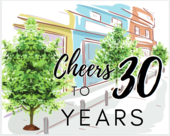 ODF's Urban and Community Forestry Assistance Program is celebrating 30 years of service in 2021!
|
|
About the Community Tree Connections newsletter
Community Tree Connections (CTC) is a periodic publication by the Oregon Department of Forestry, Urban and Community Forestry Assistance Program. Our mission is to help Oregonians improve their quality of life by promoting community investment in our urban forests. CTC is published in cooperation with the USDA Forest Service. The USDA is an equal opportunity provider and employer. Subscriptions to Community Tree Connections are free. Sign up to receive the newsletter.
|
|
|
|
|